5 Best Recipes With Udon Noodles For A Japanese Dinner
Udon noodles are a type of Japanese wheat noodle that are thick, chewy and delicious. They can be used in a variety of dishes.
If you’re looking for some recipes to try out with udon noodles, look no further! We’ve gathered some of the best recipes from our vault so you can get cooking.
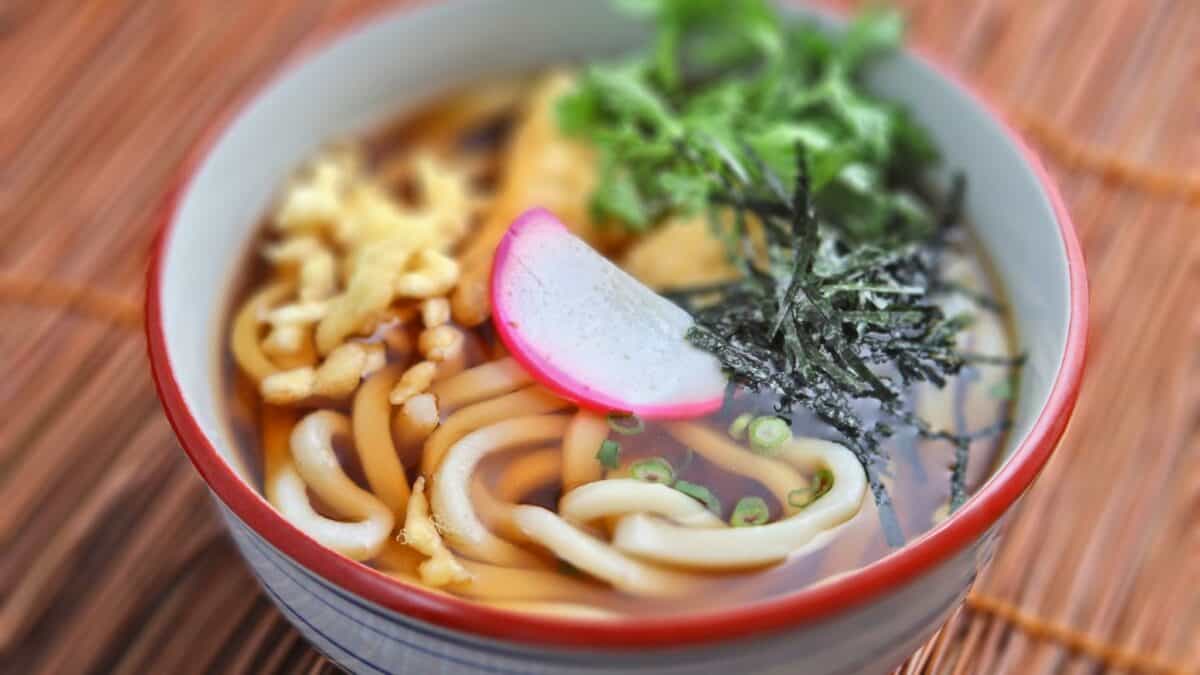

Check out our new cookbook
Bitemybun's family recipes with complete meal planner and recipe guide.
Try it out for free with Kindle Unlimited:
Read for freeIn this post we'll cover:
Best 5 recipes with udon noodles
Miso nikomi udon
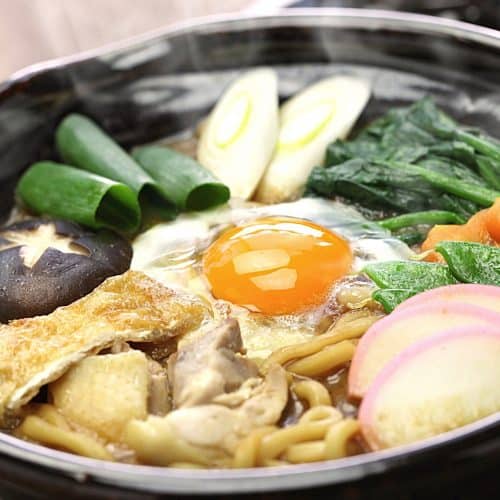
If you are looking for a delicious soup recipe that warms you from the inside out, miso nikomi udon is the way to go.
Miso nikomi udon is a noodle soup that is made by simmering chicken, fish cake, and udon noodles in a miso-dashi broth.
It’s a hearty and savory dish that is open to different interpretations and recipe variations.
It is native to the Nagoya region of Japan where Hatcho miso is quite popular.
If you are looking to include miso nikomi udon in your weekly rotation, this article will give you some great ideas for how to prepare it.
Pork Belly Udon Soup
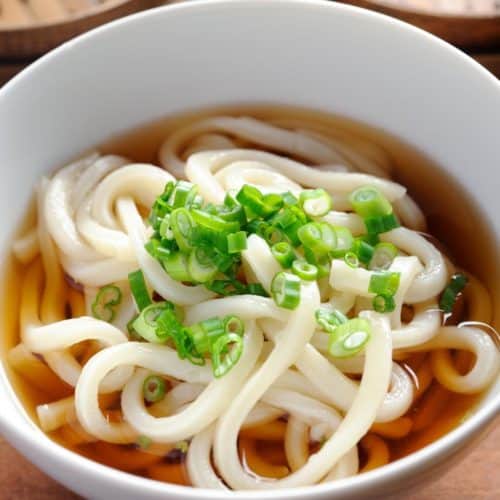
Though it may seem similar to ramen, udon is a very different kind of noodle-based dish. The noodles are generally thicker and different ingredients are used when making it.
One of the few ways that the two dishes are similar is that they both use dashi as the stock.
After all, since dashi works well in ramen and miso soup it makes sense that it would go great in a bowl of udon.
If you’re using frozen udon noodles, be sure to thaw them before cooking. The dried ones in a packet work best here, be sure to get a quality brand because that makes all the difference.
The udon noodles are so thick that you’ll taste a lot of it while eating, so a mouthful of below par noodles will ruin the dish.
Yaki udon with ground beef
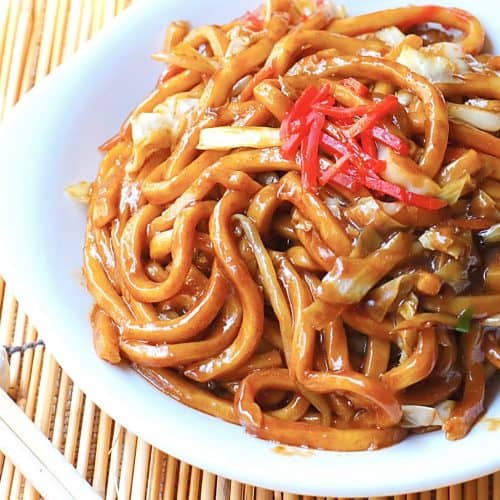
This recipe takes about 20 minutes to make, and you can use whatever type of meat and vegetables you have on hand. I’m going for a “bolognese” type of flavor and texture, so I chose ground beef and mushrooms as my main ingredients.
To make this genuinely Asian-inspired though, I’m adding some bok choy (Chinese cabbage), spring onions, mirin, and dark soy sauce.
Kitsune udon
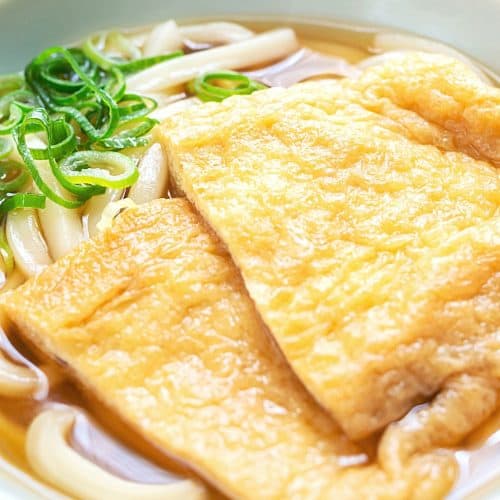
You’ve likely heard of udon noodles, but have you tried delicious kitsune udon before? It’s one of the most popular Japanese noodle soups!
Kitsune noodle soup is made with thick, chewy udon noodles in a savory dashi broth and topped with seasoned fried tofu pouches, narutomaki fish cakes, and scallions.
It’s by far one of the most hearty and tastiest Japanese soups. It’s served piping hot during cold months, but it’s served cold with dashi sauce during hot summer days.
Beef curry udon
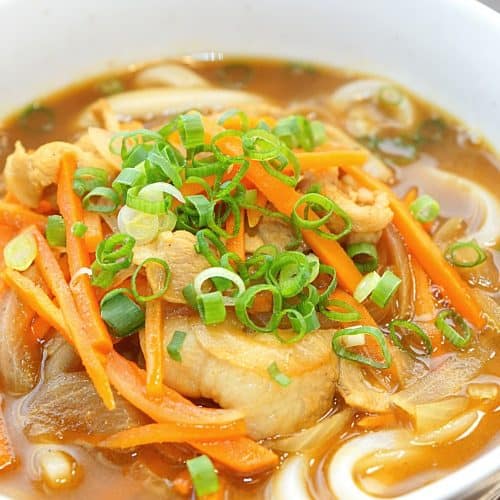
Most people associate curry with rice, but have you tried the delicious pairing between curry and thick chewy udon noodles?
In this dish, curry udon noodles are covered in a thick broth made with curry roux, dashi stock, mirin, and soy sauce.
It’s not quite a soup, but not a stew either and that rich flavor of curry with thin strips of beef and the slurpy noodles in a thick broth is just too delicious to pass up.
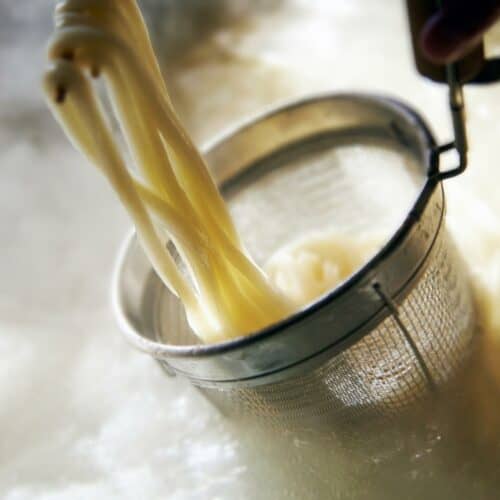
5 Best Recipes With Udon
Ingredients
- 2 servings udon noodles approx. 6.3 oz.
Instructions
- Boil a pot of water and add udon noodles, loosening them with chopsticks. Once they are loosened (about 30 seconds) drain them into a colander and set aside. (If you use dry noodles, prepare according to package directions).
- Add the warm udon noodles to your bowl at the last minute or add cold cooked udon to your bowl when using hot broth.
Video
How do you prepare store bought udon?
First, if you’re using semi-dried or dried udon noodles, you’ll need to boil them before cooking. Semi-dried udon only needs to boil for 6-7 minutes, while dried udon should boil for 9-10 minutes.
Do you salt the water for udon noodles?
You won’t need to salt the water because udon noodles are already seasoned. They are plenty salty on their own.
What goes well with udon noodles?
-A delicious broth
-Fresh vegetables
-Chicken, shrimp, or other protein
-A sprinkle of scallions
-A serving of tempura or fried tofu (optional)
How do Japanese people eat udon?
With chopsticks, of course! And with a slurp. Slurping your noodles is not only considered polite in Japan, but it also enhances the flavors and helps cool down the hot noodles as they enter your mouth. So go ahead and make some noise when you enjoy a bowl of udon!
What can I eat with cold udon?
The traditional way of eating cold udon is by cooling cooked noodles with ice water to purposely cool them off and adding a dipping sauce to them. You can also make cold udon with some green onions and furikake for a tasty meal.
Can you eat udon noodles raw?
No, you cannot eat udon noodles raw. They must be cooked in order to be eaten. Pre-packaged udon noodles are often already cooked, so while you can eat them straight from the packet it’s still not eating them raw.
Can you eat udon noodles without broth?
Yes, you can eat udon noodles without broth. Cold udon noodles are often served without broth and instead come with a dipping sauce. You can also find zaru udon, which are noodles that are served on a bamboo tray and come with a soy dipping sauce.
Can you pack udon for lunch?
Absolutely! Udon noodles make a great lunch, whether you’re packing them cold or hot. Just be sure to include a dipping sauce or some type of condiment like furikake if you’re not having them with broth.
Conclusion
Udon is a great noodle that will satisfy any hunger, whether it’s lunch or dinner.
Check out our new cookbook
Bitemybun's family recipes with complete meal planner and recipe guide.
Try it out for free with Kindle Unlimited:
Read for freeJoost Nusselder, the founder of Bite My Bun is a content marketer, dad and loves trying out new food with Japanese food at the heart of his passion, and together with his team he's been creating in-depth blog articles since 2016 to help loyal readers with recipes and cooking tips.
